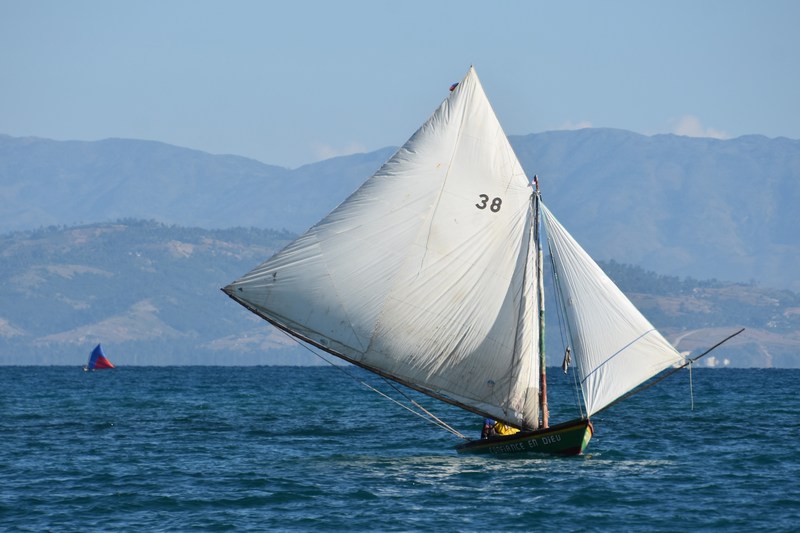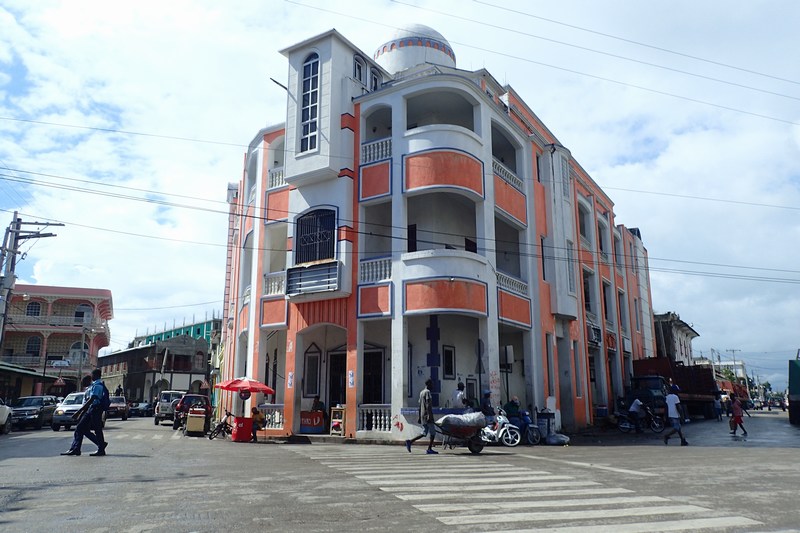The Haitians

|
Few people visit this poor country and it has no real infrastructure
for tourism. Those who visit time and again become god parents to
local children, set up community projects or just find some way of
helping. With little hope of a job, especially in Ile a Vache, the
locals are very keen to help for $10 a day. We found it hard to say
'no' as there is so little employment here. However, mangoes,
coconuts and fish mean that we have seen no-one starving. Felix came over to invite us to his restaurant for a meal, but it was the same menu as the night before. As we couldn't say no, but didn't want to go out, Caroline suggested a compromise. First time ever, we agreed on grilled lobster, plantain, fries and rice with beans which was to be delivered to our boat at 6pm. The food was excellent as we sat on deck, drinking wine, eating lobster and enjoying the starry night. Does life get any better?
The visit to the mainland town was
interesting. The rubbish along the shore is shocking and of
course there are pigs rummaging around. We caught the only
'ferry' with a big engine, which around here is 75hp. The open
boat was completely full, the lady opposite Caroline was breast
feeding her baby who was 1year 4 months and had never eaten
solid food. On arrival, it is too shallow for the ferry to get
to shore and there's no dock available, so you transfer to a
smaller boat and pole in, but to save the customers getting wet
feet the last few metres are by piggy back ride.
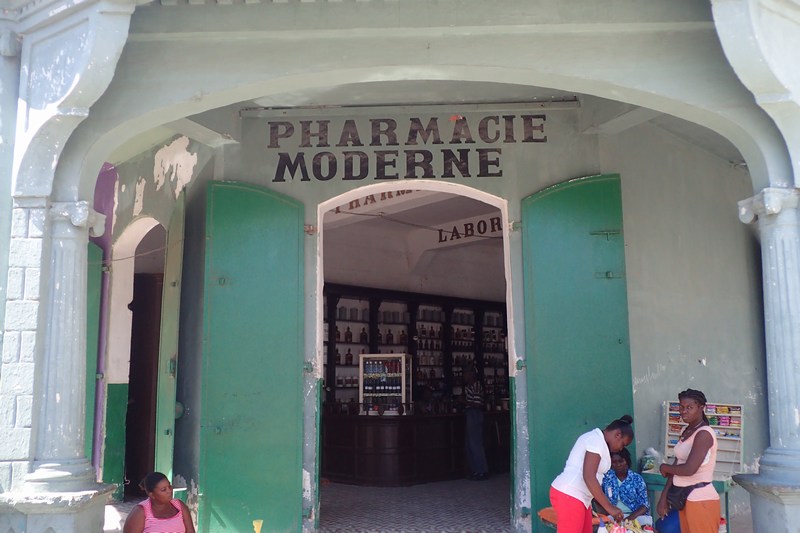 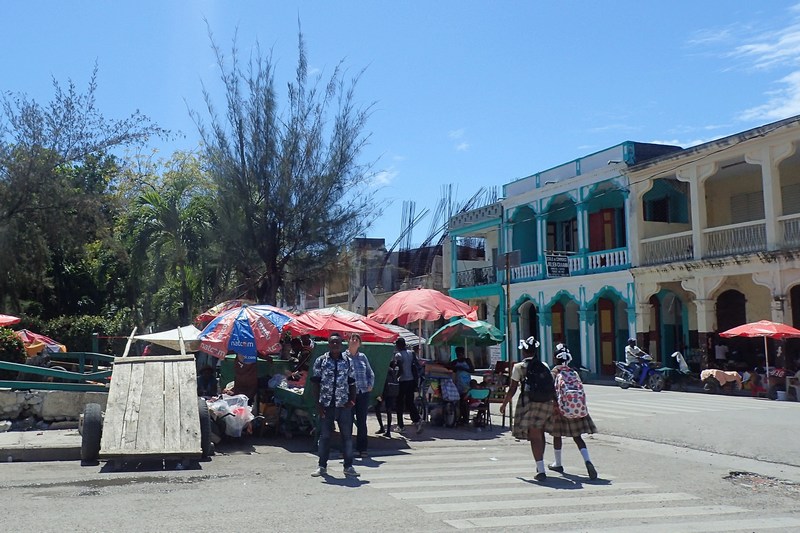 Talking to a regular visitor who set up a project to bring water to the village, it gets weirder here the more you visit and they were in their 8th year of visiting. The island has a luxury hotel and the president was there today for a meetting on sustainable tourism. On the other side of the island locals have taken all the sand and many rocks to use as building materials. With no electricity and rubbish everywhere, what does sustainable tourism even mean? 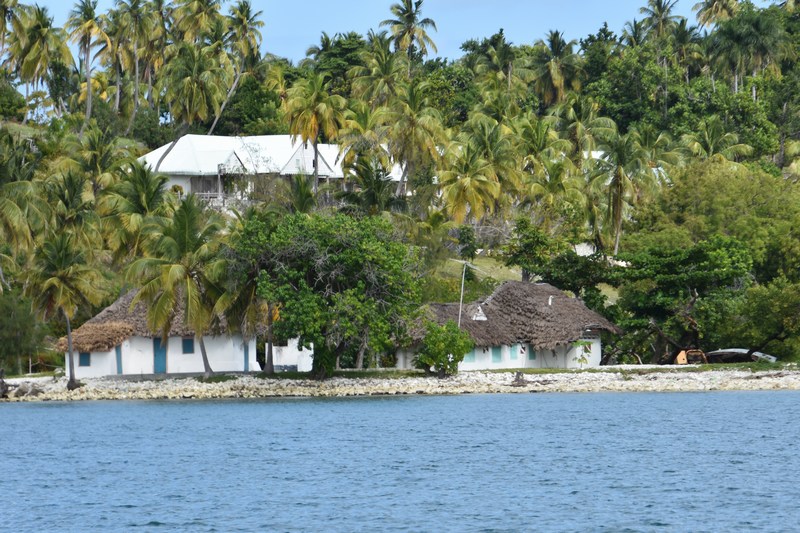 |
